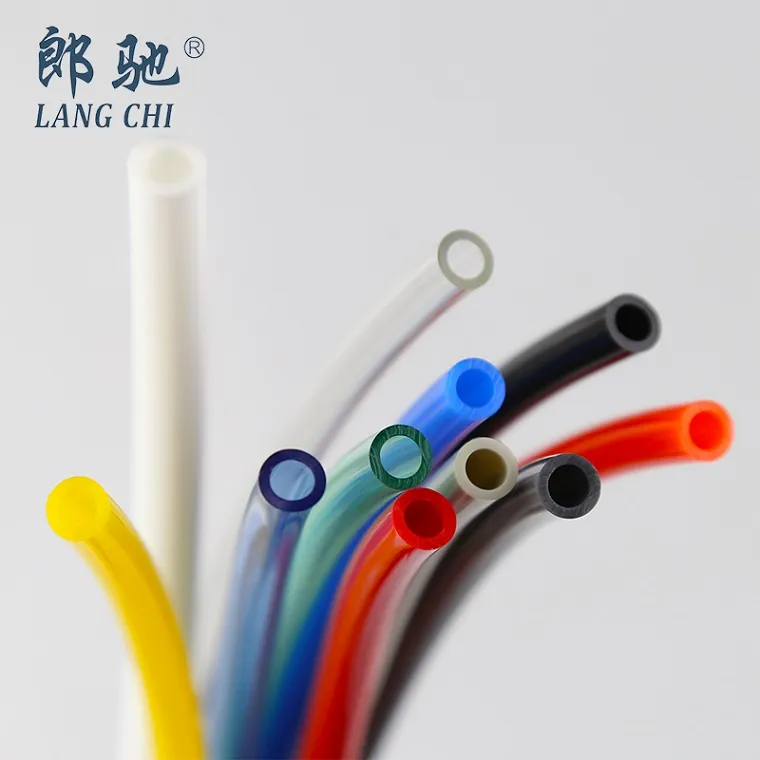
- English
- Español
- Português
- русский
- Français
- 日本語
- Deutsch
- tiếng Việt
- Italiano
- Nederlands
- ภาษาไทย
- Polski
- 한국어
- Svenska
- magyar
- Malay
- বাংলা ভাষার
- Dansk
- Suomi
- हिन्दी
- Pilipino
- Türkçe
- Gaeilge
- العربية
- Indonesia
- Norsk
- تمل
- český
- ελληνικά
- український
- Javanese
- فارسی
- தமிழ்
- తెలుగు
- नेपाली
- Burmese
- български
- ລາວ
- Latine
- Қазақша
- Euskal
- Azərbaycan
- Slovenský jazyk
- Македонски
- Lietuvos
- Eesti Keel
- Română
- Slovenski
- मराठी
- Srpski језик
What is the Maximum Pressure for a PU Tube?
2024-11-18
Polyurethane (PU) tubing is a versatile material widely used in industries like pneumatics, hydraulics, and transportation. Its flexibility, durability, and ability to withstand various stresses make it a preferred choice for applications involving fluid or air transfer. One critical aspect to consider when selecting PU tubing is its maximum pressure rating.
In this blog, we’ll explore the factors influencing the maximum pressure of PU tubes, how to choose the right tubing for your application, and some general guidelines to ensure safe and efficient use.
Maximum Pressure of PU Tubes
The maximum pressure for a PU tube depends on several factors, including:
1. Material Grade:
PU tubes come in different grades, which affect their strength and elasticity. Industrial-grade PU tubes typically offer higher pressure resistance compared to standard-grade tubes.
2. Tube Dimensions:
- Inner Diameter (ID) and Outer Diameter (OD): Thicker walls (the difference between OD and ID) can handle higher pressures.
- Smaller inner diameters can generally withstand higher pressures because the stress is distributed over a smaller surface area.
3. Operating Temperature:
PU tubes maintain their pressure resistance better at moderate temperatures. However, at extreme heat or cold, the material may soften or harden, reducing its pressure tolerance.
4. Application Medium:
The type of fluid or gas passing through the tube affects its pressure limits. Air-based applications usually require less pressure resistance compared to liquid-based ones.
5. Manufacturer Specifications:
Most manufacturers provide detailed specifications for maximum working pressure, typically stated in pounds per square inch (PSI) or bar.

Typical Pressure Ratings
For standard PU tubing:
- Air Applications: Maximum pressure ranges between 100-150 PSI (6.9-10.3 bar).
- Liquid Applications: Ratings can vary widely, but pressures often fall between 50-125 PSI (3.4-8.6 bar), depending on the fluid's density and the tubing dimensions.
High-performance PU tubes with reinforced walls can withstand pressures up to 400 PSI (27.6 bar) or more, making them suitable for demanding industrial applications.
Selecting the Right PU Tube for Your Needs
To ensure safety and efficiency, consider the following when choosing PU tubing:
1. Pressure Requirements: Always select tubing with a maximum pressure rating that exceeds your application's working pressure by at least 25% to account for surges or spikes.
2. Temperature Range: Verify that the tubing can handle the operating temperature range of your environment.
3. Chemical Compatibility: Ensure the PU material is compatible with the medium to prevent degradation.
4. Certifications: Look for tubes that meet industry standards, such as ISO or ASTM ratings, for added reliability.
Tips for Safe Operation
1. Inspect Regularly: Check for signs of wear, cracks, or bulges in the tubing.
2. Avoid Overstretching: Excessive bending or pulling can weaken the tube and reduce its pressure capacity.
3. Use Proper Fittings: Ensure that fittings and connections match the tube dimensions to prevent leaks or bursts.
Conclusion
The maximum pressure a PU tube can withstand depends on factors like material quality, size, and operating conditions. While standard PU tubes generally handle pressures up to 150 PSI, specialized variants can support much higher ratings. Understanding your application requirements and adhering to manufacturer guidelines will help ensure optimal performance and longevity.
Are you considering PU tubing for your next project? Share your thoughts or questions in the comments below!
Welcome to wholesale PU Tube from our company - LANG CHI. Our factory is a PU Tube manufacturer and supplier in China. You Can Contact Us At nblangchi@nb-lc.cn.



